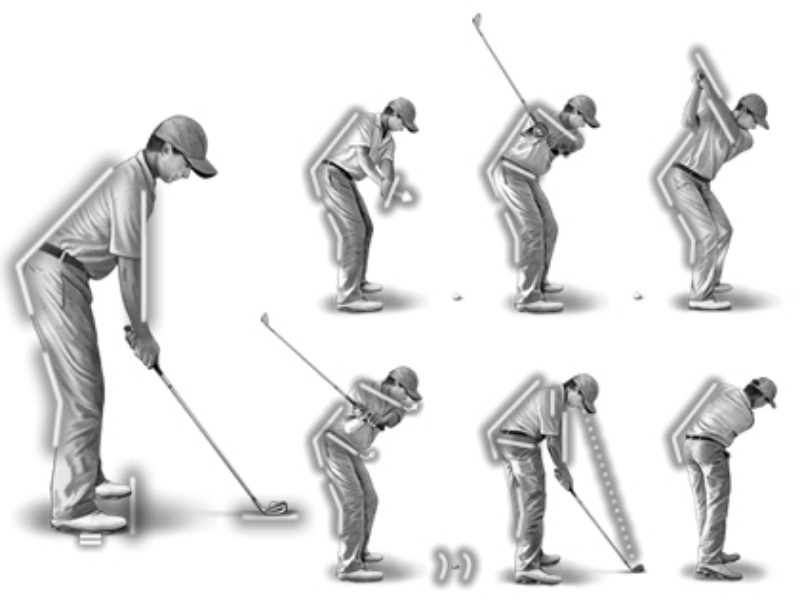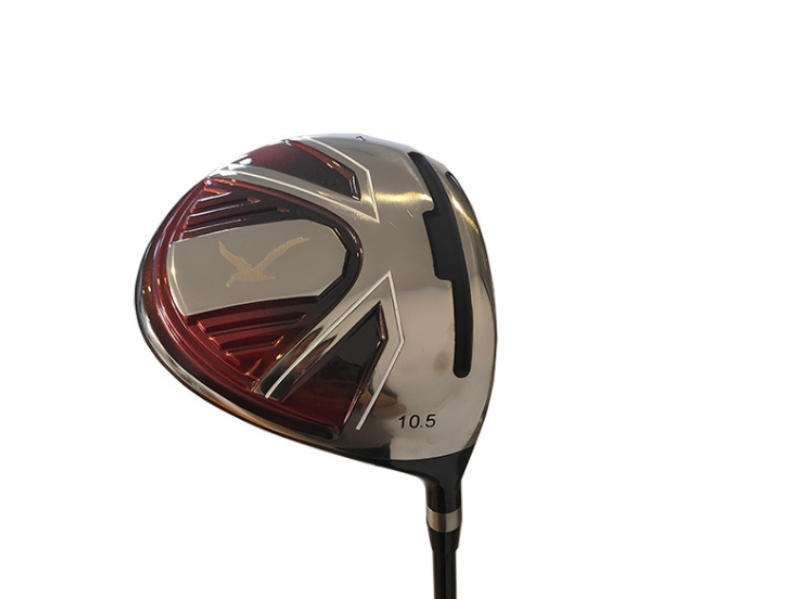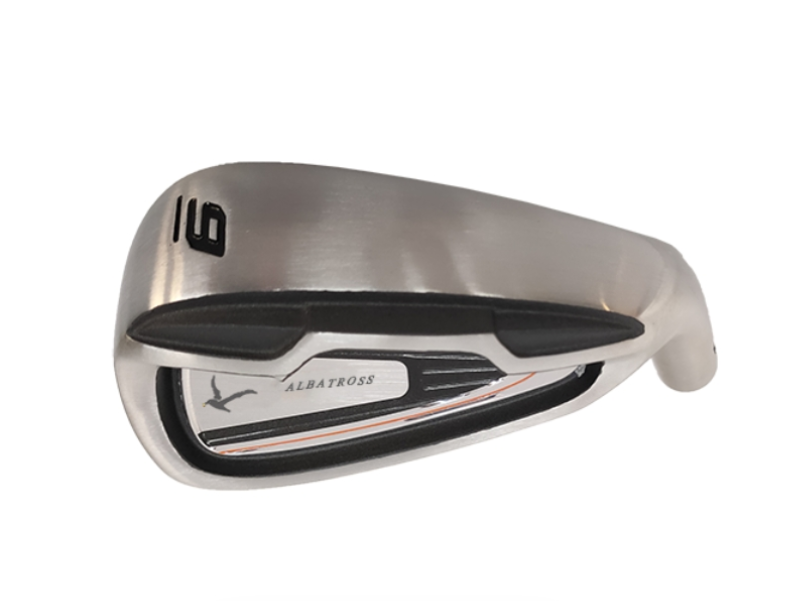
The set-up and preparation phase of the golf swing involves taking the correct position before the swing actually begins. There are many factors to consider, and neglecting key areas at the beginning will lead to problems later on.
Among other things, the club should lie flat behind the ball. The golfer should hold the club in his hands with both hands pointing straight down from the shoulders. The knees should be bent comfortably and the upper body straightened forward. The right hand is lower than the left hand, which tilts the shoulders upward. The weight is evenly distributed between the feet, mainly on the balls of the feet.
Finally, the club shaft is tilted slightly forward, with the clubface perpendicular to the target and the feet parallel to the target line.

The backswing portion of the golf swing begins when the club begins to move back and ends when the clubshaft is parallel to the ground. During this short period of time, several key movements must be made to get the swing on track.
In fact, the club should be swung back so that the shaft is pointing toward the target when it is parallel to the ground. At the same time, the clubface should be slightly downward, and the wrists should not be allowed to bend during the early stages of the swing.
The backswing portion of the golf swing begins at the end of the backswing. The backswing ends when the swing reaches the top. There are several areas to pay special attention to when reaching the top.
The left arm should remain straight and the left heel should remain on the ground, unless flexibility issues require otherwise. The right knee should remain bent and the left knee should point toward the ball. The hips will rotate but not slide back. The weight still flows to the right foot while the head remains in the box. The entire process should be performed at a slower speed than the downswing to allow for a powerful impact with the ball.
The top of the golf swing corresponds to the midpoint between the preparation position and the moment of impact. It represents the highest position of the hands and the transition point between the upswing and downswing.
The left wrist should remain flat at the top and the spine angle should still be similar to the angle at the preparation. The club shaft should be pointed toward the target and should be slightly parallel to the ground. Your back should be facing the target and your wrists should be fully bent.
The downswing portion of the golf swing corresponds to the phase after the top of the swing as the hands and club move downward toward impact with the ball.
Your hips should begin to extend first but should not slide forward too much. They should allow for a smooth transfer of weight to the left front foot while your shoulders relax at the same time. The hinge of the wrist should be maintained for as long as possible, and your club head should follow a path that brings it to a right angle to the target at impact, which is the next stage. The entire process should be executed at a speed that is significantly faster than the speed at which the club is lifted.

The moment of impact is the only point in time when your body - through the golf club - actually contacts the ball or has any impact on it. Despite the long journey leading up to impact, there are still some key elements to focus on in order to hit the ball purely on what should be a straight shot.
At impact, your hands should be in front of the ball. Your camber should be very close to the camber of your spine at address. Your eyes should be on the ball, and your hips and hands should be facing the target, or right at it. Iron shots should be swung downward, while wood shots should be swung after the club reaches the lowest point of the swing arc, when the club head is rising.
The release and extension sequence of the golf swing occurs after impact. It corresponds to the stage before the final golf stance, the action of the swing.
The word "extend" comes from the fact that during the release, your arms should be fully extended. Additionally, your spine angle should be the same angle as it was at impact, which means you should resist the urge to straighten your body. The "roll" your forearms and hands begin to "roll" during the downswing will complete the rotation, with the hand under the club now guiding your tophand toward the target.
Although it occurs after contact with the ball, the position of your body during the follow-through will indicate the previous action. Focusing on reaching the ideal follow-through position will help you correctly execute the previous golf swing phases.
Among other things, your hands should release naturally after your wrists release. Your hands and club head should wrap back toward your body as your body weight shifts toward your left foot. Finally, your hips should be facing the target, and you should resist the urge to stop your swing after the club hits the ball. Instead, pursue a complete follow-through, proud and high. Your driver is constructed differently than other golf clubs. Additionally, it makes contact with the ball as it is lifted off the ground on the tee. Therefore, there are key differences between how you hit a ball with irons and wedges and how you hit a ball with a driver.
In terms of your address position, the ball will be located further forward in your stance, in line with the instep of your front foot. This position will allow the driver to "hit up" as the club rises from the lowest point of the swing arc.
Since your driver will likely have a longer shaft than other golf clubs, the ball will be located farther from your feet. As your hands come forward to hit the ball, your spine angle will tilt slightly backward, with more than half of your weight on your back foot.
In order to hit the ball far down the fairway, your driver swing will likely be as long as your physical ability allows. This is in contrast to a wedge shot, which is more about accuracy than distance. You should also keep your swing plane flatter, again in contrast to your wedge, because of the longer shaft of the club.
